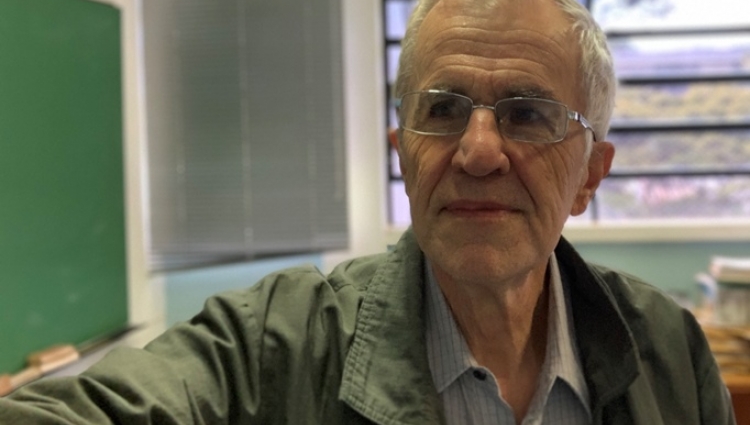Orthogonality catastrophe smears a bound state in the continuum
Publicado: 24/05/2022 - 13:58
Última modificação: 24/05/2022 - 14:00

A bound state in the continuum (BIC) is a discrete energy level within the continuous portion of a spectrum. BICs have been identified in optical systems, and the findings have led to advances in telecommunication technology. Less productive has been the search in nanostructured devices. The subject of this talk, a system belonging to the latter class, has attracted some attention in the last two decades. The device comprises a quantum wire coupled to two identical quantum dots and is modelled by a two-impurity Anderson model with a single conduction channel. The symmetry with respect to dot exchange splits the spectrum of the model Hamiltonian into even and odd sectors; the dot orbitals form a bonding (even) level and an antibonding (odd) level. While the antibonding orbital constitutes a BIC in the noninteracting model, the Coulomb interaction hybridizes it with odd eigenstates in the continuum. This hybridization accurately accounted for, a numerical renormalization-group computation of the spectral density for the antibonding orbital will be shown to pinpoint a virtual BIC in the low-energy spectrum. The BIC is virtual because the Anderson catastrophe forbids transitions to the lowest level in the even sector of the spectrum. Particle-hole excitations allow transitions to higher even states and broaden the spectral density asymmetrically into a divergent power-law akin to an x-ray edge singularity. This smearing can nonetheless be avoided: additional numerical results will be presented to show that adequate tuning of a gate potential avoids the catastrophe, washes out the contribution from particle-hole excitations, and recovers the infinitely sharp line distinctive of a BIC.